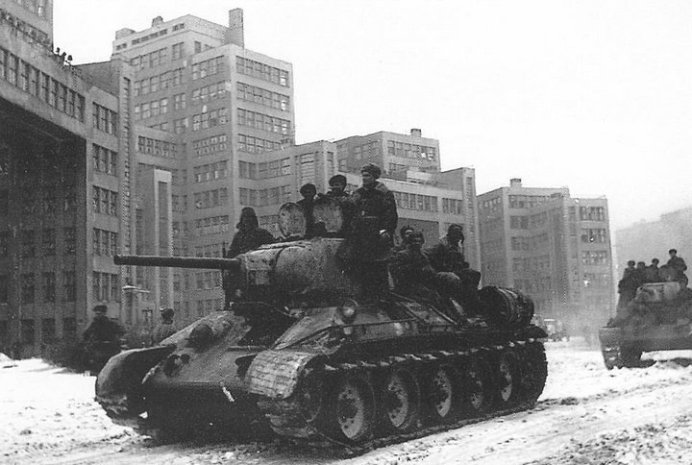Various Three-to-one rules of thumbs have existed in the U.S. Army and in writings possibly as early as the American Civil War (1861-1865). These are fine as “rules of thumb” as long as one does not take them seriously and understands what they really mean. But, unfortunately, we have now seen something that is a loose rule of thumb turned into a codified and quantified rule. This is annoyingly overstating its importance and as given in U.S. Army manuals, is patently false.
The U.S. Army has apparently codified the “three-to-one rule” in its documentation and has given it a value. In the 2014 edition of FM 6-0, paragraph 9-103, it states that “For example, historically, defenders have over a 50 percent probability of defeating an attacking force approximately three times their equivalent strength.” This statement, on the surface, simply is incorrect. For example, the following table from my book War by Numbers is drawn from a series of 116 division-level engagements in France in 1944 against the Germans (see War by Numbers, page 10) They show the following relationship between force ratio and outcome:
European Theater of Operations (ETO) Data, 1944
Force Ratio………………..Result…………………Percent Failure…Number of cases
0.55 to 1.01-to-1.00………Attack Fails…………………..100%……………….5
1.15 to 1.88-to-1.00………Attack usually succeeds……21%………………..48
1.95 to 2.56-to-1.00………Attack usually succeeds……10%………………..21
2.71-to-1.00 and higher…Attacker Advances…………….0%……………….. 42
Now these engagements are from fighting between the U.S., UK and Germany in France and Germany in 1944. These are engagements between forces of roughly equal competence. As can be seen, based upon 42 division-level engagements, in all cases of attacks at three-to-one (more specifically 2.71-to-1 and greater), the attacker advanced. Meaning in all cases of attacks at three-to-one, the attacker won. This directly contradicts the statement in FM 6-0, and contradicts it based upon historical data.
This is supplemented by the following two tables on the next page of War by Numbers. The first table shows the German performance when attacking Soviet units in 1943.
Germans attacking Soviets (Battles of Kharkov and Kursk), 1943
Force Ratio………………..Result………………….Percent Failure…Number of cases
0.63 to 1.06-to-1.00………Attack usually succeeds……..20%……………………..5
1.18 to 1.87-to-1.00………Attack usually succeeds……….6%……………………17
1.91-to-1.00 and higher…Attacker Advances……………….0%……………………21
The next table shows the Soviet performance when attacking German units in 1943:
Soviets attacking Germans (Battles of Kharkov and Kursk), 1943
Force Ratio………………Result…………………..Percent Failure…Number of cases
0.40 to 1.05-to-1…………Attack usually fails…………70%……………………10
1.20 to 1.65-to-1.00…….Attack often fails…………….50%……………………11
1.91 to 2.89-to-1.00…….Attack sometimes fails…….44%……………………..9
These charts are from the fighting around Kharkov in February, March and August of 1943 and the fighting during the Battle of Kursk in July 1943. It is 73 engagements between the German and Soviet armies.
Now, there is a clear performance difference between the German and the Soviet armies at this time. This is discussed in considerable depth in War by Numbers and will not be addressed here. But, what it amounts to is that the German Army has an advantage in the casualty exchange and that advantage also shows up in the outcomes of the battles, as show above. If they attacked at two-to-one odds are greater, they would win. The Soviets attacking at the same odds would win only 56 percent of the time. Clearly, at the division-level, in a unit to unit comparison, the Germans were two or three times better than their Soviet opponents.
Still, even in the worse case, which is the Soviets attacking the Germans, we do not get to the claim made in FM 6-0, which is the defender won 50% of the time when attacked at three-to-one. In fact, the Soviets managed to win 50% of the time when attacking at 1.20 to 1.65-to-1. Something is clearly wrong with the statement in FM 6-0.
Now, at the time I wrote War by Numbers, I was not aware of this sentence planted in FM 6-0 and so therefore did not feel a need to respond to the “three-to-one rule.” It is a rule of thumb, not completely without value, that had been discussed before (see Dupuy, Understanding War, pages 31-37). I thought this issue was properly understood in the U.S. analytical and defense community, therefore I did not feel a need to address it further. It turns out that I do. So, I will take a moment to tap into our databases and properly address this using all the resources at my disposal. This will be in subsequent blog posts.









